The forest products industry makes products that people use every day, like lumber, facial tissue, and diapers. But did you know that we can make plastic from wood? Thanks to researchers, many alternative forest products have been developed.
For this Forestry Job Profile, I interviewed Laura McIlveen, a chemical engineer with Alberta Innovates Technology Futures. When Laura was finishing high school, she knew she liked chemistry, and she wanted to find a practical application for her interests. She decided to pursue a career in chemical engineering and research.
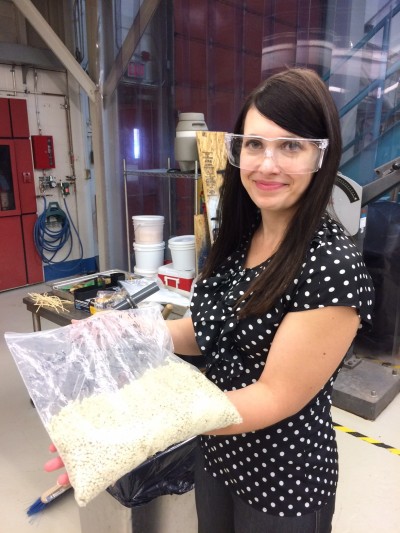
Tell me about your job. Who do you work for? What is your role in the organization?
I work for Alberta Innovates Technology Futures (AITF), an industrial research organization. We carry out research for Alberta industries to try to improve processes and products. AITF has over 600 people working in Forestry, Agriculture, Oil and Gas, and Advanced Materials. I am a chemical engineer working in a business development role. I help to coordinate and design research projects for our clients.
What is your background (experience/training)?
I started as a co-op student working in a pulp mill, then moved to a process engineer position in a canola oil factory and then into research and development. I have been with AITF for 7 years and have had the opportunity to work in a wide variety of roles. I have worked in our labs and pilot plants and now I help with business development and project coordination.
Why are researchers important to the forest sector?
Research is important to the forest sector to help improve the existing processes and products and make the sector continually improve to compete in the global market. Innovation and technology help industry decrease costs, increase production, and make new products.
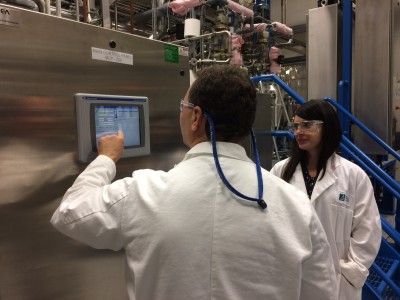
What does a typical day/week look like for you?
I have a weekly team meeting with our group of researchers and technologists to discuss projects. I meet with clients to discuss ongoing or new projects. I write proposals and project plans and help coordinate those with our contracts department. Some weeks I go to visit clients at their mills or places of work. Other weeks I may attend a conference. I have had the opportunity to travel quite a bit with my job.
What aspects of your job do you enjoy the most?
I really enjoy engaging with clients. I think it’s interesting to hear about the challenges they have and help identify ways that our team can help address an issue.
What are some of the challenges you have faced?
Finding funding for research can be challenging. It is a constant struggle to write proposals to clients or funding bodies and only some of the projects actually get funded and go forward.
Can you give an example of a time when your work significantly impacted your organization?
My team received a large grant to build a new pilot plant to build our research capacity. I helped to ensure that the money was spent on time and budget.
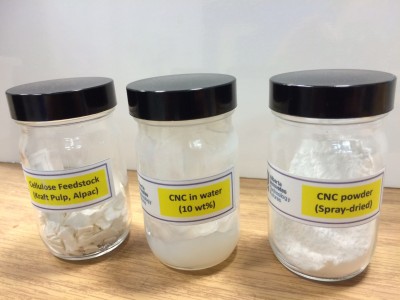
CNC (above) stands for cellulose nanocrystals. It is extracted from wood and can be used as an additive in plastic and other materials. Wood fibre extract is stronger than carbon fibre, resulting in strong, light-weight plastic. This plastic can be used for many products, including car and airplane parts, electronics, and kitchenware. Learn more here and here.
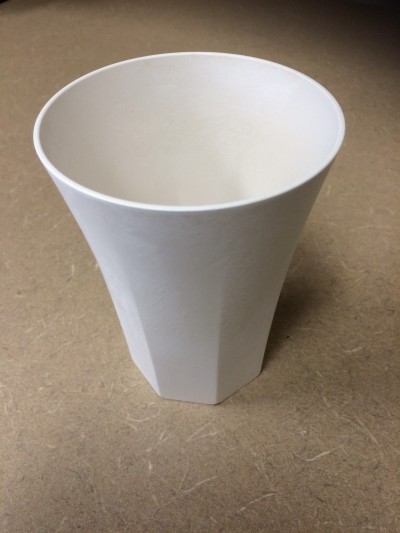
This plastic cup was made using wood fibre as a reinforcer. Click here to learn more about the process of turning wood into plastic.
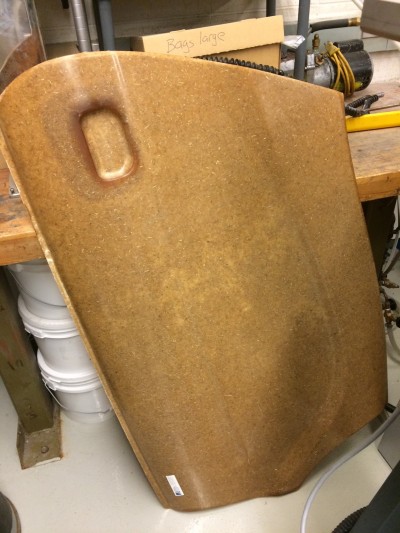
This plastic car door panel is made from hemp fibres. A similar process is being used to make plastic car parts using wood fibres. Learn more.
What qualities make up an ideal candidate for a researcher?
A researcher needs to be curious, creative, and flexible. And also have a lot of patience.
What are some of your favourite aspects of working in forestry research?
It is an interesting time to be researching forest products because there are a number of projects going on right now. Although there is a lot of opportunity in oil and gas in Alberta, I chose forestry for a number of reasons. For one, forest products are in demand, so forestry offers a sustainable job outlook. There is tremendous opportunity for professional growth, and the jobs rarely require people to live in camps, so if you want to have the freedom to go home each night, forestry is a great choice.
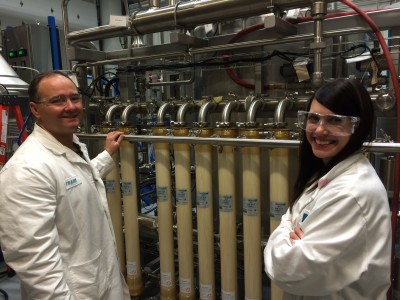
Managing the forest responsibly, making high quality products, and delivering these products are all key components of the forest industry, but without research, the industry wouldn’t grow and evolve. As with any industry, there is always room for growth in forestry—in more ways than one! Each year in Alberta, the forest industry puts 8% of its revenue into research and development. This means approximately $300,000,000 is spent advancing areas including alternative wood products, biofuels, and tree disease resistance.
If you want to learn more about forest research in Alberta, you can visit these sites:
Alberta Innovates: Technology Futures
Alberta Innovates: Bio Solutions
Alberta Innovates: Energy and Environment Solutions
Deprecated: Function get_magic_quotes_gpc() is deprecated in /home/workwil/public_html/wp/wp-includes/formatting.php on line 4371
Deprecated: Function get_magic_quotes_gpc() is deprecated in /home/workwil/public_html/wp/wp-includes/formatting.php on line 4371
Deprecated: Function get_magic_quotes_gpc() is deprecated in /home/workwil/public_html/wp/wp-includes/formatting.php on line 4371